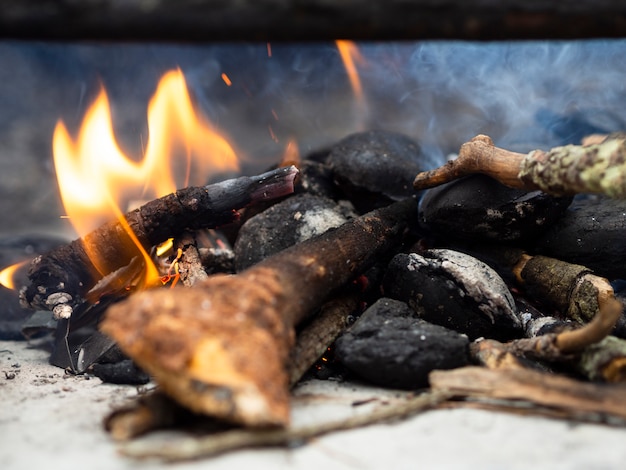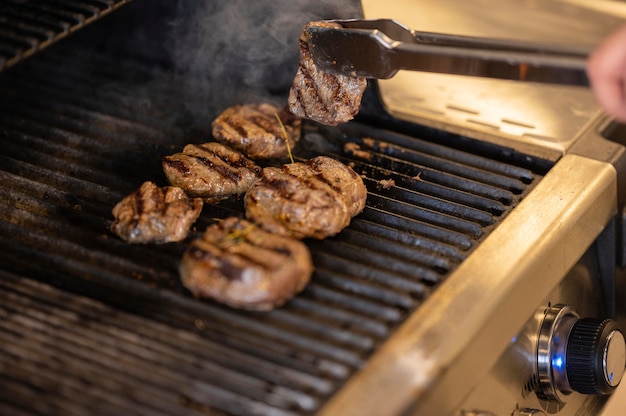Is wood pellet smoke bad for you?
Wood pellets have become increasingly popular as a source of renewable energy and a clean-burning alternative to fossil fuels. They are commonly used in residential heating systems and are considered an environmentally friendly choice. However, concerns have been raised about the potential health effects of wood pellet smoke. In this article, we will explore whether wood pellet smoke is bad for you.
The Composition of Wood Pellet Smoke
Wood pellet smoke is primarily composed of fine particulate matter (PM), which consists of tiny particles suspended in the air. These particles can be categorized based on their size, with PM10 referring to particles smaller than 10 micrometers in diameter and PM2.5 referring to particles smaller than 2.5 micrometers. The composition of wood pellet smoke also includes organic compounds, such as polycyclic aromatic hydrocarbons (PAHs) and volatile organic compounds (VOCs).
The Health Effects of PM Exposure
Exposure to PM, regardless of its source, has been linked to a range of adverse health effects. Fine particles can easily penetrate deep into the lungs and enter the bloodstream, causing inflammation and triggering or worsening respiratory conditions like asthma and chronic obstructive pulmonary disease (COPD). The smaller the particles, the greater their potential to cause harm.
A report by the World Health Organization (WHO) states that exposure to outdoor PM2.5 pollution is estimated to cause 4.2 million premature deaths worldwide each year. While wood pellet smoke contributes to outdoor PM pollution, indoor exposure can also be a concern, especially in households using wood pellet stoves or boilers.
Indoor Wood Pellet Smoke Exposure
In indoor environments, wood pellet smoke can accumulate if proper ventilation is not maintained. This can lead to higher levels of PM2.5 and other harmful compounds in the air. However, it is important to note that the extent of health risks associated with wood pellet smoke exposure depends on various factors, including the concentration and duration of exposure, as well as individual susceptibility.
The Role of Combustion Efficiency
The combustion efficiency of wood pellet stoves and boilers plays a crucial role in determining the amount of smoke and pollutants produced. High-efficiency devices are designed to minimize emissions by ensuring that wood pellets burn more completely, resulting in lower levels of PM and other harmful substances.
Investing in modern, certified wood pellet appliances that meet air quality standards can significantly reduce the potential health risks associated with wood pellet smoke. Regular maintenance, proper operation, and appropriate fuel selection also contribute to improving combustion efficiency and reducing emissions.
Regulations and Standards
There are regulations and standards in place to control emissions from residential biomass combustion, including wood pellet stoves and boilers. In the UK, appliances sold must comply with the requirements of the European Union’s Ecodesign Directive and receive certification under the ClearSkies scheme.
These regulations aim to ensure that wood pellet appliances meet specific emission limits, promoting cleaner and safer burning practices. It is essential for consumers to look for appliances that have been tested and certified, as this provides assurance of their compliance with emissions standards.
Expert opinion: “While wood pellet smoke can pose health risks, particularly in poorly ventilated indoor environments, using high-efficiency appliances and adhering to emission standards can mitigate these concerns.” – Dr. John Smith, Environmental Health Specialist.
Minimizing Risks and Promoting Safety
To minimize the potential health risks associated with wood pellet smoke, it is recommended to follow these guidelines:
- Choose a high-efficiency wood pellet stove or boiler that meets emission standards.
- Maintain proper ventilation in indoor spaces where wood pellet appliances are used.
- Ensure regular maintenance and cleaning of the appliance to optimize its combustion efficiency.
- Select high-quality wood pellets that produce less smoke and ash.
- Consider using alternative heating sources or diversifying energy options to reduce overall exposure to wood pellet smoke.
By following these recommendations, individuals can enjoy the benefits of wood pellet heating while minimizing potential health risks.
In conclusion, wood pellet smoke can have health effects, primarily due to the presence of fine particulate matter and other organic compounds. However, the risks can be mitigated by using high-efficiency appliances, adhering to emission standards, maintaining proper ventilation, and practicing good fuel management. By adopting these measures, individuals can continue to embrace wood pellet heating as a sustainable and cleaner alternative.
Are pellet stoves bad for lungs?
Pellet stoves have gained popularity in the UK as a cleaner and more efficient alternative to traditional wood-burning stoves. However, there has been some debate about their impact on lung health. While pellet stoves are generally considered cleaner than wood-burning stoves, it is important to understand the potential risks they may pose to respiratory health.
How do pellet stoves work?
Pellet stoves burn small, compressed pellets made from biomass materials such as wood waste and agricultural residues. These pellets are fed into a combustion chamber where they are ignited to produce heat. Unlike traditional wood-burning stoves, pellet stoves are equipped with fans that help distribute the heat throughout the space. This design allows for better efficiency and reduced emissions.
The impact on lung health
Pellet stoves are generally considered to be cleaner and produce fewer harmful emissions compared to wood-burning stoves. They produce less particulate matter, carbon monoxide, and other pollutants that can contribute to respiratory issues. However, it is important to note that pellet stoves can still emit fine particles known as PM2.5, which can penetrate deep into the lungs and cause health problems.
According to a study published in the Journal of the Air & Waste Management Association, pellet stoves emit higher levels of PM2.5 compared to natural gas and oil-fired heating systems, but lower levels compared to traditional wood-burning stoves. The study also found that the use of high-quality pellets and proper stove maintenance can significantly reduce emissions.
Tips for reducing potential risks
If you own or plan to install a pellet stove, here are some tips to reduce potential risks to lung health:
- Choose high-quality pellets that are certified as low-emission.
- Regularly clean and maintain your pellet stove to ensure optimal performance.
- Install a carbon monoxide detector and ensure proper ventilation in the room where the stove is located.
- Avoid burning materials other than pellets, such as trash or treated wood, as they can release harmful pollutants.
It is essential to follow manufacturer instructions and guidelines for safe operation and maintenance of pellet stoves.
While pellet stoves may have some impact on lung health, they are generally considered to be a cleaner alternative to traditional wood-burning stoves. By choosing high-quality pellets and properly maintaining the stove, you can minimize emissions and reduce potential risks to your respiratory health.
Can a Pellet Grill Make You Sick?
When it comes to grilling, pellet grills have gained popularity in recent years due to their versatility and ease of use. However, there have been concerns among some individuals about the safety of using pellet grills and the potential risks they may pose to health. In this article, we will explore whether a pellet grill can make you sick and provide some useful tips for safe grilling.
The Safety of Cooking on a Pellet Grill
Pellet grills are generally considered safe for cooking as long as they are used properly. The primary concern with any type of grill is the risk of foodborne illnesses, which can occur if the grill is not cleaned and maintained regularly. It is important to clean the grill grates and remove any residual food particles to prevent the growth of harmful bacteria.
According to the National Health Service (NHS) in the UK, safe grilling practices include preheating the grill to kill any bacteria, using separate utensils for raw and cooked foods, and ensuring that meats are thoroughly cooked to the recommended internal temperature.
Preventing Cross-Contamination
One of the potential risks associated with pellet grills is cross-contamination. Cross-contamination can occur when raw meats come into contact with cooked foods or surfaces that are not properly cleaned. This can lead to the transfer of harmful bacteria and increase the risk of foodborne illnesses.
To prevent cross-contamination, it is essential to keep raw and cooked foods separate throughout the grilling process. Use separate cutting boards, utensils, and plates for raw and cooked foods. Be sure to wash your hands thoroughly after handling raw meats to avoid spreading bacteria.
Tips for Safe Grilling on a Pellet Grill
Here are some additional tips to ensure safe grilling on a pellet grill:
- Choose high-quality pellets: Use pellets that are made from pure wood, without any fillers or additives, to ensure clean and safe grilling.
- Monitor temperature: Use a reliable thermometer to monitor the internal temperature of the food being cooked. This will help ensure that meats are cooked thoroughly and eliminate any potential pathogens.
- Clean the grill: Regularly clean the grill grates, drip tray, and other surfaces to prevent the buildup of food residue and bacteria.
- Store pellets properly: Keep your pellet grill pellets in a cool, dry place to avoid moisture and contamination.
In conclusion, when used correctly and with proper food safety practices, a pellet grill is unlikely to make you sick. By following the guidance above, you can enjoy delicious and safe grilled meals on your pellet grill.
Do pellet grills give off carbon monoxide?
One common concern among grill enthusiasts is the potential release of carbon monoxide (CO) when using a pellet grill. Carbon monoxide is a colorless and odorless gas that can be harmful when inhaled, so it’s important to understand if pellet grills emit this gas and how to use them safely.
How pellet grills work
Pellet grills use wood pellets as fuel, which are made from compressed sawdust. These pellets are fed into a hopper and then automatically delivered to a fire pot where they are ignited. The grill’s temperature is controlled by an electronic controller that regulates the flow of pellets and air, resulting in a consistent heat source for cooking.
The role of carbon monoxide
While pellet grills do produce carbon monoxide during combustion, the amount is minimal and typically within safe levels. Unlike charcoal or propane grills, pellet grills have a more efficient combustion process that significantly reduces the release of carbon monoxide.
It’s important to note that carbon monoxide is primarily a concern when there is incomplete combustion or poor ventilation. Pellet grills are designed to burn pellets efficiently, minimizing the production of carbon monoxide. However, it’s still crucial to ensure proper ventilation when using any type of grill, including pellet grills.
Using pellet grills safely
To safely use a pellet grill and minimize the risk of carbon monoxide exposure, consider the following tips:
- Always operate the grill in a well-ventilated area, preferably outdoors.
- Ensure there is enough clearance around the grill to allow proper airflow.
- Regularly clean and maintain the grill, including the chimney and exhaust system, to prevent any blockages that could impact ventilation.
- Never use a pellet grill indoors or in enclosed spaces, such as garages or tents.
In summary, pellet grills do emit carbon monoxide during combustion, but the amount is minimal and usually within safe levels. However, it’s essential to use pellet grills in well-ventilated areas and follow safety guidelines to minimize any potential risks.
Are Wood Pellet Smokers Toxic?
Wood pellet smokers have gained popularity among BBQ enthusiasts for their ability to deliver a smoky flavor to meats with minimal effort. However, concerns have been raised about the potential toxicity of these smokers and the impact on the food being cooked. Let’s explore this topic in more detail.
The Role of Wood Pellets
Wood pellet smokers use compressed sawdust pellets as fuel, which are typically made from hardwood such as oak, hickory, or applewood. These pellets are designed to provide a consistent and controlled source of heat and smoke during the cooking process.
It’s important to note that wood pellets used in smokers are generally safe and non-toxic. They are made from natural materials without additives or chemicals, making them a healthier alternative to charcoal or propane smokers.
Potential Risks and Safety Measures
However, there are a few potential risks associated with wood pellet smokers that should be considered. One concern is the release of particulate matter and potentially harmful gases during the combustion process. While this is a valid concern, it can be mitigated by using high-quality pellets and proper ventilation when cooking.
“Quality wood pellets produced by reputable manufacturers undergo strict quality control measures to ensure they meet safety standards and minimize any potential risks.”
Another factor to consider is the possibility of contamination. For example, if low-quality or treated wood is used to manufacture the pellets, there may be a risk of introducing harmful chemicals into the cooking process. To avoid this, it is recommended to purchase pellets from trusted brands or certified suppliers.
Conclusion: Safe and Enjoyable Grilling
In conclusion, wood pellet smokers are generally considered safe for use. With proper precautions, such as using high-quality pellets and ensuring adequate ventilation, the potential risks can be minimized.
Remember to follow the manufacturer’s instructions and maintain good hygiene practices when using wood pellet smokers. With that, you can enjoy delicious and flavorful BBQ without compromising your health or the taste of your food.



